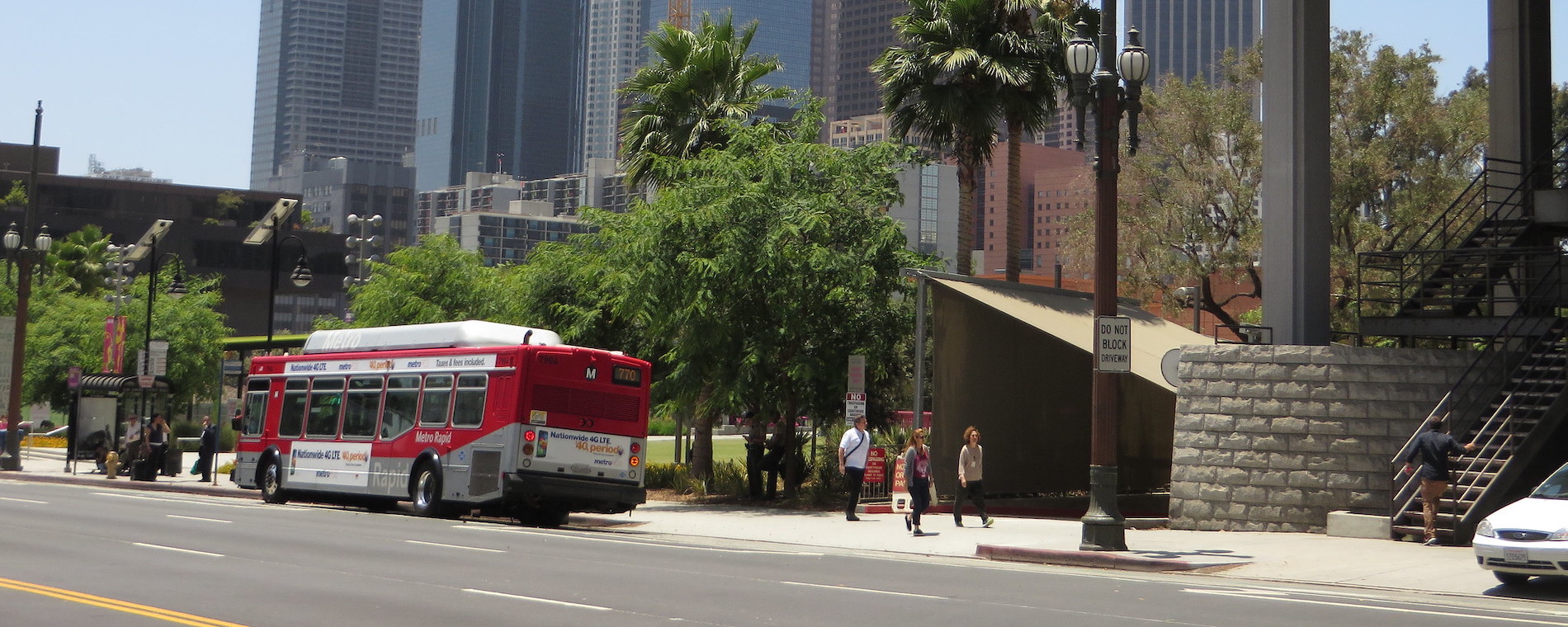This article is part 2 in a series on carbon pricing, environmental justice, and California’s cap-and-trade program. Check out our other articles in the series:
Addressing Community Needs through Smart Climate Policy (9/27)
California’s example of what the Green New Deal could look like (10/10)
Check out our full report, Carbon Pricing in a Just Transition
Market Flexibility and Health Disparities
Carbon dioxide is not directly harmful to human health. It is actually a part of the natural processes of life on Earth – and an essential element for flora in all types of ecosystems. It is also a “geographically diffuse” pollutant, meaning it blends in with the larger atmosphere pretty quickly, no matter where it comes from. Yet the issue is that carbon has become displaced, and come to exist in our atmosphere at a level that has led to climate crisis we currently face.
Climate change is also deeply connected to historical health and social injustices stemming from the fossil fuel economy. In addition to carbon dioxide and other greenhouse gases (GHGs), at present, we also have an issue of local pollutants such as sulfur oxides (SOx), nitrogen oxides (NOx), particulate matter (PM 2.5) and volatile organic compounds (VOC) that are harmful to breath in, causing respiratory and cardiovascular disease. In the US, over 100,000 people die prematurely each year from particulate matter alone. These “co-pollutants” tend to come out of the same tailpipes and vents as carbon dioxide, and do so disproportionately in communities of color and low-income neighborhoods.
Where does local pollution come from?
There are two main types of local pollution in our communities – stationary and mobile sources.
“Stationary sources” are exactly that – stationary. Think power plants, manufacturing facilities, and other large industrial processes that create air pollution in the surrounding neighborhood. It’s no surprise that there is a long and well-documented history of governments and corporations building these plants in low-income communities and communities of color.
“Mobile sources” describe primarily motor vehicle tailpipes. Commercial trucks and other diesel engines pump particles into the air that interact with each other and sunlight to form compounds that irritate and damage our lungs. Congested areas, parking lots, bus depots, and heavy commercial truck routes all can create concentrated levels of these particles, particularly in – you guessed it – low-income communities and communities of color.
The relationship between local air quality and climate change presents both a massive opportunity and a key challenge. On one hand, we have robust evidence that the cumulative benefits of cutting CO2 emissions through reduced burning of fossil fuels are substantial. Reducing our greenhouse gas pollution leads to reductions in the harmful co-pollutants as well. The public health benefits alone can outweigh the costs of cutting CO2, even without considering the global benefits of reducing greenhouse gas pollution. Climate action is no longer just noble – it is an act of self interest and in fact is crucial for public health.
On the other hand, the distribution of who stands to gain the most from different policies, where investment is spent, and how priorities are set, remain complicated questions. The U.S. faces massive environmental injustices when it comes to local air quality, with urban communities of color and low-income residents bearing the worst adverse health impacts from pollutants. Addressing these social and environmental injustices is therefore a necessity and should be a central pillar in the crafting and visioning of climate solutions. Not only because these considerations and intentionality make our climate policies stronger, but also open up the conversation to issues more people can engage with and care about, making the movement and initiative that much stronger.
If carbon pollution pricing is to be a central policy solution to climate change, it must address key social and environmental issues to the best of its ability as well. So, how can carbon pricing address local air quality injustices? Here is a good start.
1. We Need More Data
First and foremost, there is a data problem when it comes to local pollution. Many cities and urban areas suffer from substantial air quality issues, but lack the technical resources to precisely measure what they’re breathing on a daily basis.
It’s vital for communities to not only understand what pollutants they breath in, but where they come from. Is it an industrial facility spewing particulate matter down the road? Is it a crowded bus depot elevating levels of nitrogen oxides in the neighborhood? Is it a congested urban environment with a mix of everything?
Knowledge is power. In places that lack these measurements, an early priority should be setting up sufficient air monitors for communities to get the data they need. If state policymakers are looking for a starting point, they could examine California’s new Community Air Protection Program, which sets up air pollution monitors and a community-oriented framework to address local pollution.
2. Make Polluters Pay
Simply put, our daily activities and products need to reflect their true costs, both from greenhouse gases and local pollution. If a carbon price remains lower than the external damages caused from pollution, then we fail to fully capture the injustices of the polluter-industrial economy. These local health costs can vary widely, which is why proper measurement of local pollution is so pivotal.

Real results require real price incentives. Carbon prices that reflect global studies on the damages of pollution will have a far better impact on local health. Source: Carbon Pricing in a Just Transition, Climate XChange, 2019
These price ranges would be a good starting point to create changes in some of our most polluting industries. The challenge is that governments designing carbon pricing policies are getting pulled in multiple directions.
For example, the California Air Resources Board (CARB) was directed to design a cap-and-trade program with the lowest carbon price necessary to achieve their climate goals. However, through 2020, the cap-and-trade program was designed to play a minor role compared to other regulations like fuel efficiency standards and renewable portfolio standards.
As a result, California has only needed carbon prices between $12 and $17/tCO2e to stay on track for their climate targets. This needs no apology when talking about greenhouse gases, but does not set up the program to properly deal with local pollution in disadvantaged communities as well.
There are plenty of ways to deal with this tension. For example, requiring facilities to measure, report, and pay an additional charge for their local pollution levels could create more targeted health outcomes in disadvantaged communities, while the carbon pricing program remains focused on efficient greenhouse gas reduction.
Alternatively, carbon pricing and environmental justice advocates could unite behind a policy that requires carbon prices to reflect the full external damages of pollution, rather than the minimum price needed to incrementally reduce greenhouse gas emissions.
We can also turn to global studies of what carbon price levels are needed to avoid the worst impacts of climate change. The Stern-Stiglitz Commission on Carbon Prices finds that a global price of $40-$80/tCO2e, rising to $50-$100 by 2030, is needed to reduce emissions in line with ambitions under the Paris Agreement.
3. Invest in Community Transformation
It’s easy to envision how a price on pollution can change industrial behavior; make it more expensive to pollute, and companies will seek out more efficient, cleaner processes to protect their bottom line.
Transportation, however, is a more complicated story. Concentrated air pollution from transportation is often a product of the built environment – think bus depots, congested streets, parking lots, and other urban areas where a lot of cars, trucks, and buses are constantly running.
A price incentive still has a major role to play by encouraging people to switch to cleaner modes of transportation. However, asserting control over public health impacts in disadvantaged communities requires using revenue to transform our land use patterns, transportation infrastructure, and streetscape. This comes through combination of state-wide initiatives (like new public transit infrastructure) and locally-driven solutions, all of which a price on carbon can help fund.
Take the Transformative Climate Communities (TCC) Program in California, which uses cap-and-trade dollars to fund dense, placed-based transformations in some of the most disadvantaged neighborhoods in California. The recent Watts Rising project received funding to build 216 new affordable homes, purchase 10 new battery-electric buses, redesign over 30 blocks of streetscape and urban trails, plant over 4,000 trees, establish 50 new mini-farms, install cooling surfaces on 4 schoolyards, build 5 miles of new bike paths, perform over 450 solar panel and energy efficiency upgrades, and established electric vanpool/car sharing programs.
This is a glimpse of what real transformative, locally-driven solutions could look like using carbon pricing revenue. But it needs to be vastly expanded. Watts is one of thousands of neighborhoods that has the ability to envision its own clean environment, but just needs the resources and authority to do so.
4. We Need More Than Just Carbon Pricing
Carbon pricing alone simply cannot address the monumental task of mitigating climate change, let alone the deep-rooted air pollution injustices in the United States. More than any of the above issues is the need for us to develop comprehensive, cohesive climate policies with clearly outlined goals for both addressing the climate crisis and achieving a just transition.

Carbon pricing should be at the center of this framework, but it should never be designed in a vacuum. At the very least, carbon pricing needs to absorb the issues and desired outcomes of the other policy solutions it preempts.
What’s Happening in California?
California’s legal requirements dictate that their cap-and-trade program reflect the minimum price needed to achieve their emissions reductions targets, rather than the actual health damages of local pollution. This creates challenges in using the carbon price to target specific health outcomes in disadvantaged communities.
When a cap-and-trade program is designed to prioritize the cheapest ways to reduce CO2 pollution, it tends to do so first in the electricity sector. This has occurred in California, where a majority of reductions in the state are due to increased hydroelectricity output, plummeting costs for wind and solar, and shifting contracts for imports.
As a result, we’ve seen decreasing local air pollution from electric power facilities as well. However, most other types of facilities have continued to increase their annual pollution since cap-and-trade began in California.
Change in Average Emissions by Industry in California, 2010-2012 to 2015-2017

Each industry tells a different story. Communities should look closely at exactly what type of facilities are located nearby when evaluating the cap-and-trade program’s ability to address their public health concerns.
The power of carbon pricing is in its flexibility – it can do a lot, a little, or somewhere in between. Given the timeframe we have to avoid the worst impacts of the climate crisis, and the public health benefits of addressing pollution, I think we should ask it to do a lot more.
Article Featured Image: Ken Lund









